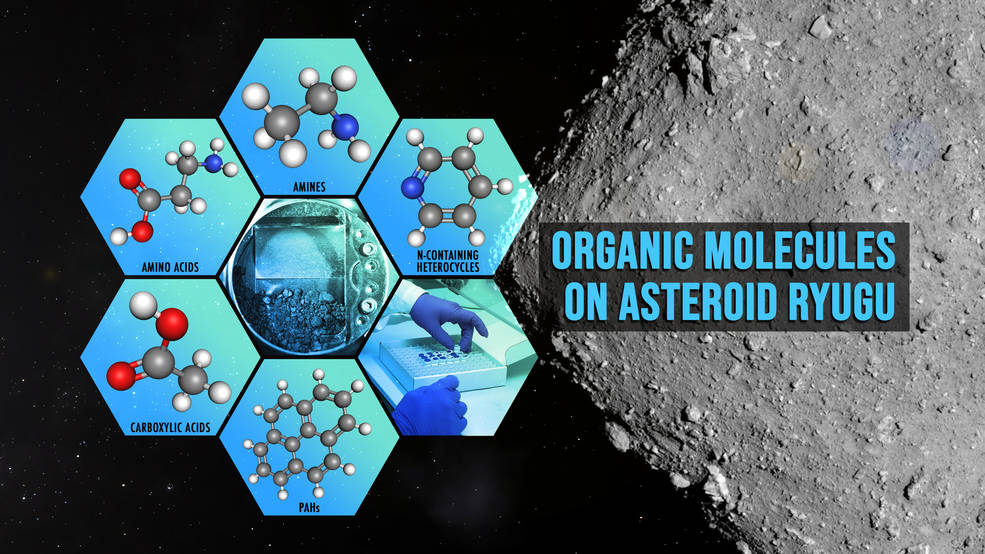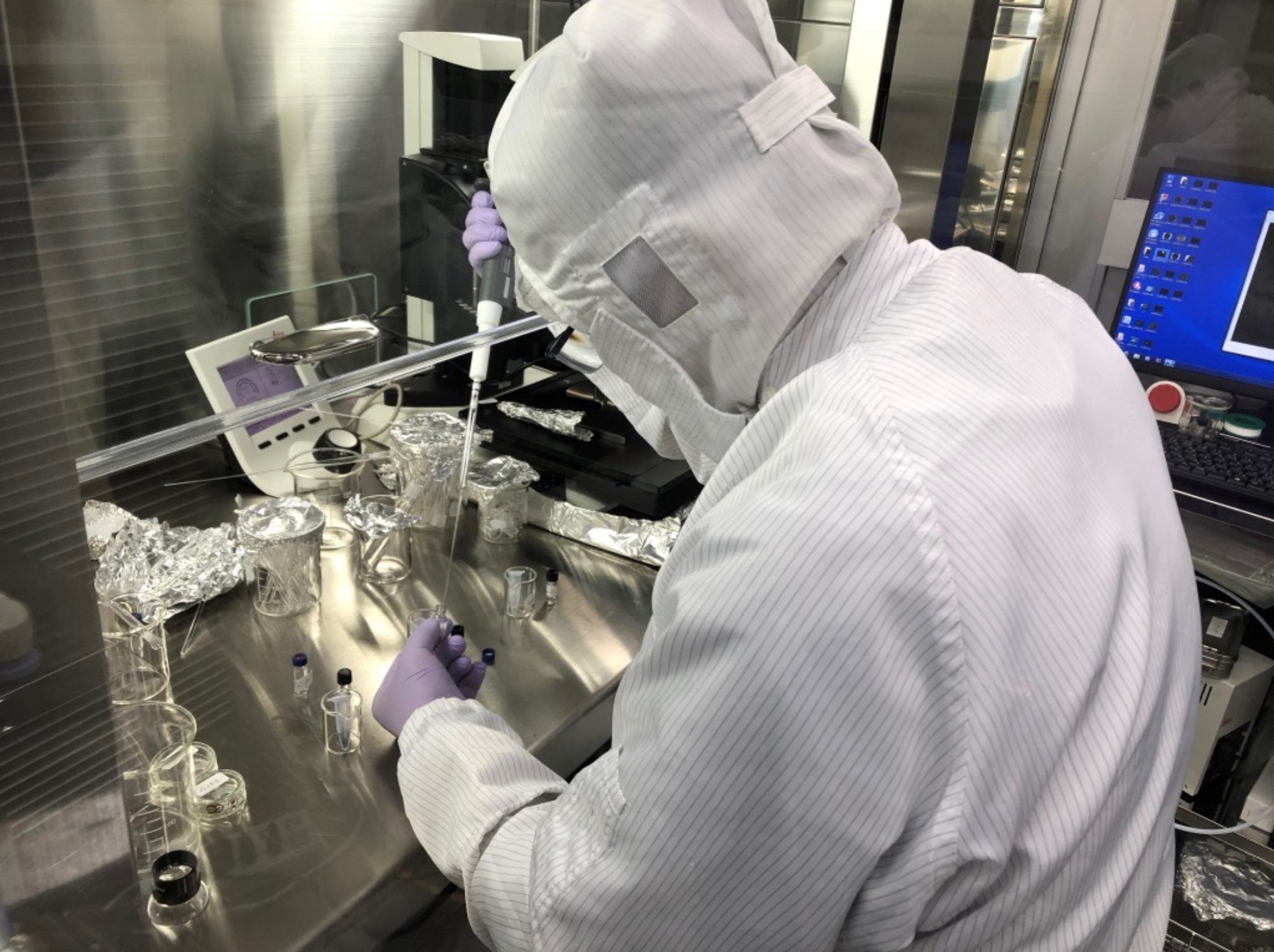Asteroid Ryugu has a rich complement of organic molecules, according to a NASA and international team’s initial analysis of a sample from the asteroid delivered to Earth by Japan’s Hayabusa2 spacecraft. The discovery adds support to the idea that organic material from space contributed to the inventory of chemical components necessary for life.
Asteroid Ryugu has a rich complement of organic molecules, according to a NASA and international team’s initial analysis of a sample from the asteroid’s surface delivered to Earth by Japan’s Hayabusa2 spacecraft. The discovery adds support to the idea that organic material from space contributed to the inventory of chemical components necessary for life.
Credits: NASA’s Goddard Space Flight Center
Download video
Organic molecules are the building blocks of all known forms of terrestrial life and consist of a wide variety of compounds made of carbon combined with hydrogen, oxygen, nitrogen, sulfur, and other atoms. However, organic molecules can also be made by chemical reactions that don’t involve life, supporting the hypothesis that chemical reactions in asteroids can make some of life’s ingredients.

The science of prebiotic chemistry attempts to discover the compounds and reactions that could have given rise to life, and among the prebiotic organics found in the sample were several kinds of amino acids. Certain amino acids are widely used by terrestrial life as a component to build proteins. Proteins are essential to life as they are used to make enzymes which speed up or regulate chemical reactions and to make structures from microscopic to large such as hair and muscles. The sample also contained many types of organics that form in the presence of liquid water, including aliphatic amines, carboxylic acids, polycyclic aromatic hydrocarbons, and nitrogen-containing heterocyclic compounds.
“The presence of prebiotic molecules on the asteroid surface despite its harsh environment caused by solar heating and ultraviolet irradiation, as well as cosmic-ray irradiation under high-vacuum conditions, suggests that the uppermost surface grains of Ryugu have the potential to protect organic molecules,” said Hiroshi Naraoka of Kyushu University, Fukuoka, Japan. “These molecules can be transported throughout the solar system, potentially dispersing as interplanetary dust particles after being ejected from the uppermost layer of the asteroid by impacts or other causes.” Naraoka is lead author of a paper about this research published online February 23 in Science.
“So far, the amino acid results from Ryugu are mostly consistent with what has been seen in certain types of carbon-rich (carbonaceous) meteorites that have been exposed to the most water in space,” said Jason Dworkin of NASA’s Goddard Space Flight Center in Greenbelt, Maryland, a co-author of the paper.
“However, sugars and nucleobases (components of DNA and RNA) which have been discovered in some carbon-rich meteorites, have not yet been identified in samples returned from Ryugu,” said Daniel Glavin of NASA Goddard, a co-author of the paper. “It is possible these compounds are present in asteroid Ryugu but are below our analytical detection limits given the relatively small sample mass available for study.”
The Hayabusa2 spacecraft collected the samples Feb. 22, 2019, and delivered them to Earth Dec. 6, 2020. They were extracted in Japan in July 2021 and analyzed at Goddard in the Fall of 2021. A very small amount of sample (30 milligrams or about 0.001 ounce) was allocated for the international soluble organic analysis team. The sample was extracted (like tea) in many different solvents in Japan and analyzed in labs in Japan, Goddard, and Europe using a vast range of machines like those in a forensics lab.
This work is the first organic analysis of the Ryugu sample, and the samples will be studied for years. “We will do a direct comparison of the samples from Ryugu and the sample from asteroid Bennu when NASA’s OSIRIS-REx mission returns it to Earth in 2023,” said Dworkin. “OSIRIS-REx is expected to return much more sample mass from Bennu and will provide another important opportunity to look for trace organic building blocks of life in a carbon-rich asteroid.”
More about the mission and partners:
Hayabusa2 is led by the Japan Aerospace Exploration Agency (JAXA) in collaboration with the German Space Center (DLR) and the French Space Agency (CNES), and supported by NASA and the Australian Space Agency (ASA). NASA supported the research under the Consortium for Hayabusa2 Analysis of Organic Solubles.


























